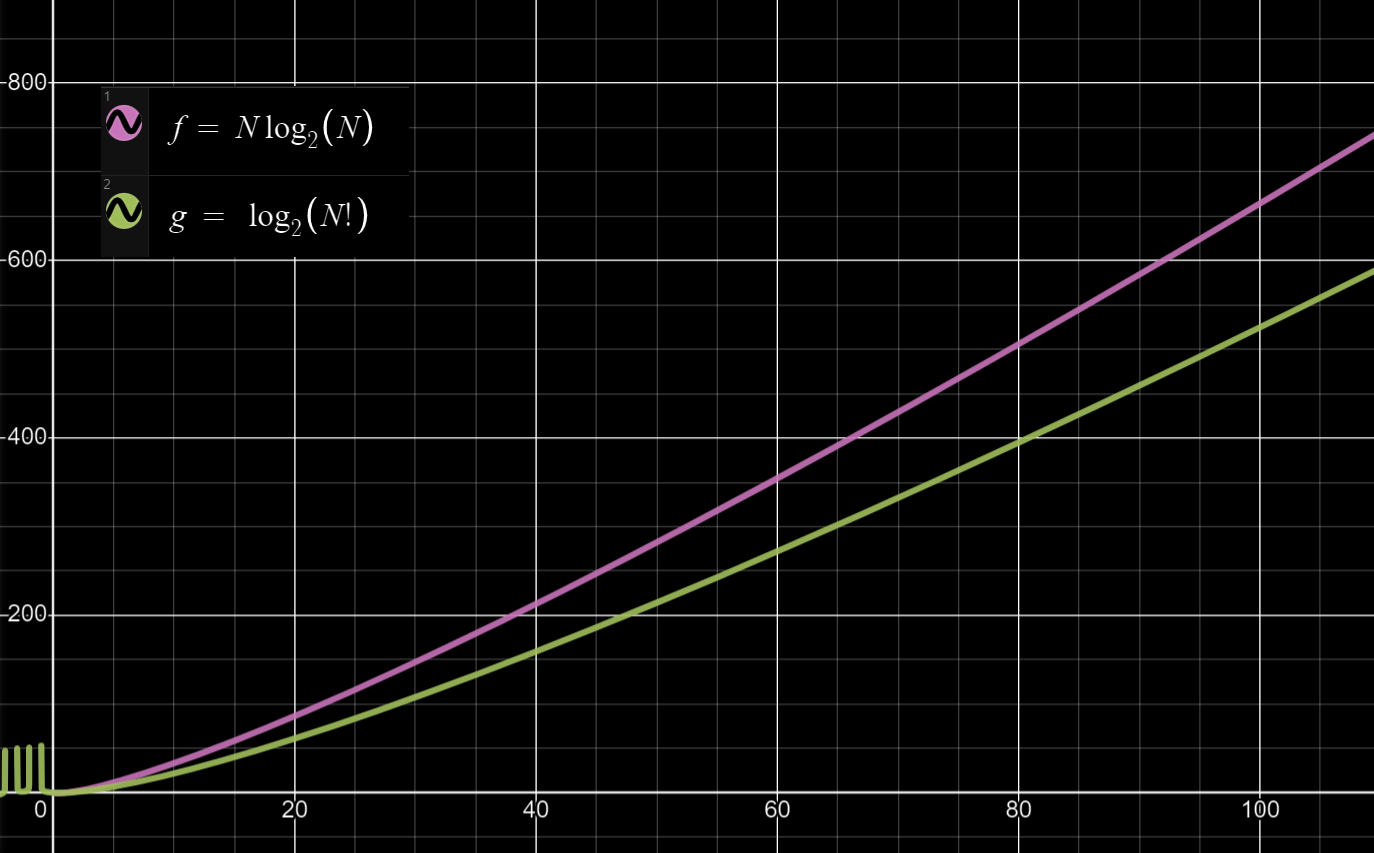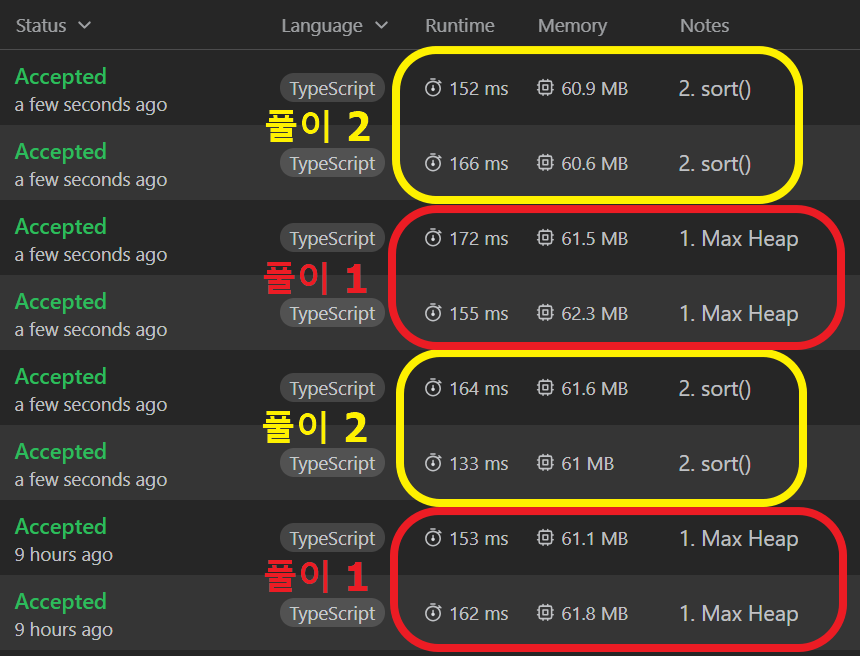공부한 것
- LeetCode #973. K Closest Points to OriginLeetCode - The World's Leading Online Programming Learning PlatformLevel up your coding skills and quickly land a job. This is the best place to expand your knowledge and get prepared for your next interview.
https://leetcode.com/problems/k-closest-points-to-origin/description/

⇒ 좌표 평면에 흩어져 있는 점들의 위치[x,y]가 주어졌을 때 원점에 가장 가까운 k개의 점들을 따로 모아 반환하는 문제였다. Map Heap의 크기를 k로 고정시켜두면, 최종적으로 전체 점들 중 k번째 최소값보다 작은 값들만 남게 되는 원리를 이용하였다.
풀이 1: Max Heap이용, 시간복잡도 O()
function kClosest(points: number[][], k: number): number[][] { const maxHeap: MaxHeap = new MaxHeap(); for (let point of points) { const [x, y] = point; const distance = x * x + y * y; if (maxHeap.getLength() < k) maxHeap.insert(x, y); else if (maxHeap.getMax().distance > distance) { maxHeap.popMax(); maxHeap.insert(x, y); } } return maxHeap.getPositionArray(); }; interface point { position: [number, number]; distance: number; } class MaxHeap { private heap: point[]; constructor() { this.heap = []; } // 마지막 요소를 제자리로 끌어 올리기 private bubbleUp() { // 부모의 '거리'값보다 더 크면 부모와 자리를 교체하기를 반복한다. let index = this.heap.length - 1; const point = this.heap[index]; while (index > 0) { let parentIndex = Math.floor((index - 1) / 2); let parent = this.heap[parentIndex]; if (point.distance <= parent.distance) break; this.heap[parentIndex] = point; this.heap[index] = parent; index = parentIndex; } } // 첫 번째 요소를 제자리로 끌어내리기 private bubbleDown() { // 존재하는 자식 중 나의 '거리'값보다 더 큰 최대 자식과 자리를 교체하기를 반복한다. let index = 0; const point = this.heap[index]; while (true) { let leftChildIndex = index * 2 + 1; let rightChildIndex = index * 2 + 2; let leftChild, rightChild; let swapTarget = null; if (leftChildIndex < this.heap.length) { leftChild = this.heap[leftChildIndex]; if (leftChild.distance > point.distance) { swapTarget = leftChildIndex; } } if (rightChildIndex < this.heap.length) { rightChild = this.heap[rightChildIndex]; if ((swapTarget === null && rightChild.distance > point.distance) || (swapTarget !== null && rightChild.distance > leftChild.distance)) { swapTarget = rightChildIndex; } } if (swapTarget === null) break; this.heap[index] = this.heap[swapTarget]; this.heap[swapTarget] = point; index = swapTarget; } } insert(x:number, y:number) { const point: point = { distance: x * x + y * y, position: [x, y] }; this.heap.push(point); this.bubbleUp(); } popMax() { const max = this.heap[0]; const end = this.heap.pop(); if (this.heap.length > 0) { this.heap[0] = end; this.bubbleDown(); } return max; } getMax() { return this.heap[0]; } getLength() { return this.heap.length; } getPositionArray() { return this.heap.map((point) => point.position); } }
풀이 2: sort() 이용, 시간복잡도 O()
function kClosest(points: number[][], k: number): number[][] { return points.map((point) => { const [x, y] = point; const distance: number = x * x + y * y; return { position: point, distance }; }) .sort((a, b) => a.distance - b.distance) .slice(0, k) .map((point) => point.position); }

위 그래프에서 보는 바와 같이 이 조금 더 빨라야 하는데, 실행 결과를 보면 이번엔 그렇지만도 않다.

- 최대 힙(Max Heap)에 단순 숫자(number)가 아닌 객체를 넣도록 변형한 부분이 재밌었다. 오늘로 4일째 매일 힙 구현중인데 좀 외워졌을까?
Uploaded by N2T